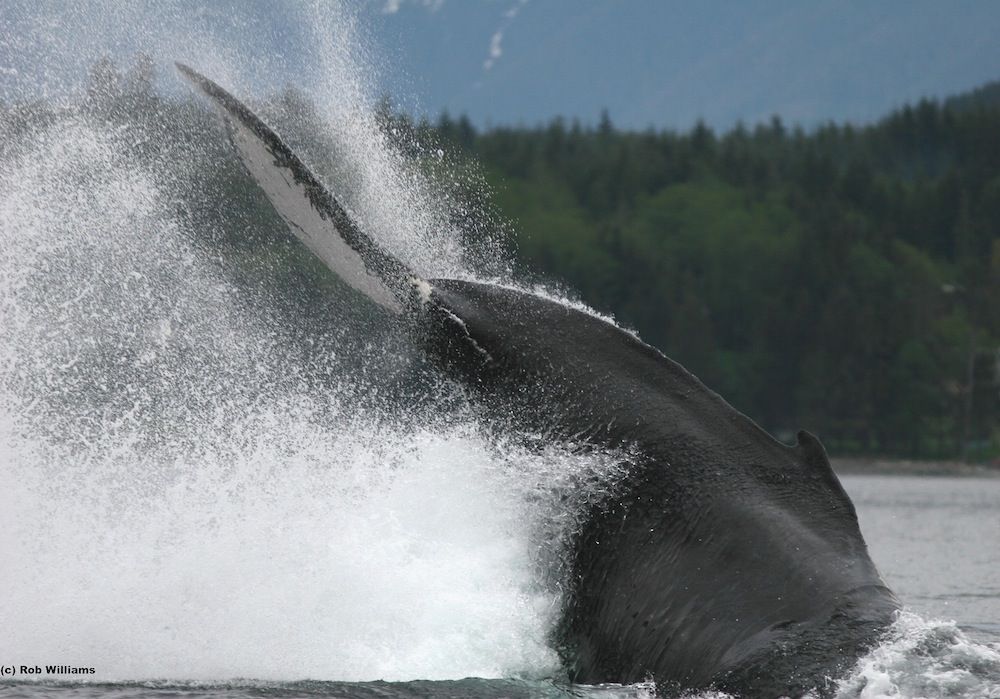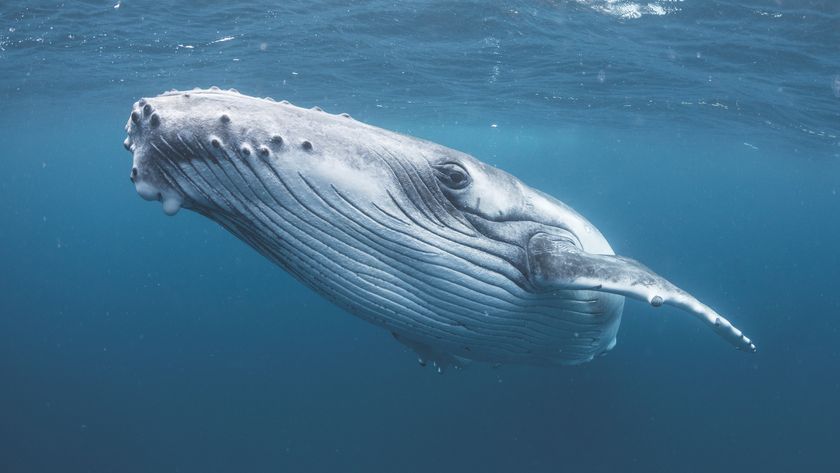Humpback Whale Populations Increase Off British Columbia

Humpback whale populations are on the rise in a small coastal area of British Columbia, a new estimate reveals, but researchers remain cautious about the whales' safety in the face of several human threats.
In the summer, the whales share space with a shipping channel that goes through the Caamaño Sound area, which is just south of the port city of Prince Rupert and midway up the province's coast. Whale collisions with freighters sometimes happen, and ship noise interferes with the feeding calls the humpbacks emit. Humpbacks can also get tangled in fishing gear and drown, or starve if the gear interferes with their ability to eat.
Canadian gas company Enbridge is considering a pipeline in the area that would bring oil from the tar sands in a neighboring province, Alberta, and pump it several thousand miles to the coast for shipping.
Despite the threats, however, new estimates show the local humpback population doubled between 2004 and 2011 to about 134 individuals, following a trend of increasing numbers in the North Pacific area. [In Photos: Tracking Humpback Whales]
"The doubling was a combination of true population growth, and covering a wider area as there was more funding for research and two boats on the water," Erin Ashe, who led the research and is pursuing her Ph.D. with Scotland's University of St. Andrews, told LiveScience.
That increase is delicate, though. Using a statistical metric called "potential biological removal" that shows the impact of individuals leaving the population, the researchers say it could take the death of just one or two whales before the numbers go down again.
"The feeling globally and certainly regionally is they haven’t reached recovery yet, but the good news is that they're recovering," Ashe said.
Sign up for the Live Science daily newsletter now
Get the world’s most fascinating discoveries delivered straight to your inbox.
Counting flukes
Humpbacks were hunted commercially in the North Pacific off Canada until the country banned the practice in 1966; the hunting reduced the population by an estimated 90 percent from 15,000 whales before 1905 to 1,400 whales. (The exact numbers are uncertain given that no one was closely counting whales in the 1960s, Ashe said.)
Researchers rely on sightings of markings on the top of the whales' tails (called "flukes") to determine which individuals are in a particular area. A 2011 estimate with a separate research team — based on 18,000 fluke identification photographs — pegged the entire North Pacific's humpback population at 21,808, suggesting to some that the species may be doing better than ever recorded before.
Ashe's group used two local groups of spotters to look for whales in an area about 40 miles (65 kilometers) long: the North Coast Cetacean Society and the Gitga’at First Nation. Surveys were done between July and October.
Ashe's statistical analysis revealed the population is doubling, and that the whales are thriving. "The survival estimate is among the highest reported for the species anywhere in the world," she said.
The wider North Pacific survey from 2011 indicated a 5 percent annual increase, so she said the numbers in her smaller study area were not too much of a surprise.
Her next step is several studies on shipping noise in the area, including a paper that is in press in the journal Animal Conservation. Surveys of whale population numbers in Caamaño Sound are ongoing, she added.
The study was published in the journal PLOS ONE on Sept. 11. Besides Ashe's institution in Scotland, the study included participation by three British Columbia-based marine resource and cetacean groups.
Follow Elizabeth Howell @howellspace. Follow us @livescience, Facebook & Google+. Original article on LiveScience.

Elizabeth Howell was staff reporter at Space.com between 2022 and 2024 and a regular contributor to Live Science and Space.com between 2012 and 2022. Elizabeth's reporting includes multiple exclusives with the White House, speaking several times with the International Space Station, witnessing five human spaceflight launches on two continents, flying parabolic, working inside a spacesuit, and participating in a simulated Mars mission. Her latest book, "Why Am I Taller?" (ECW Press, 2022) is co-written with astronaut Dave Williams.











